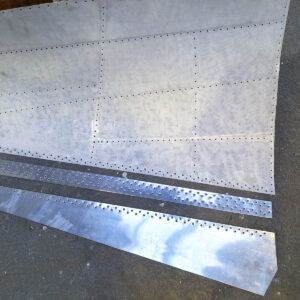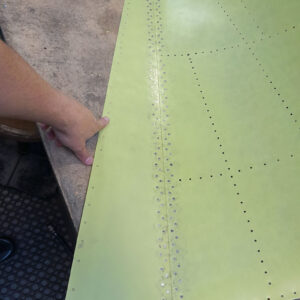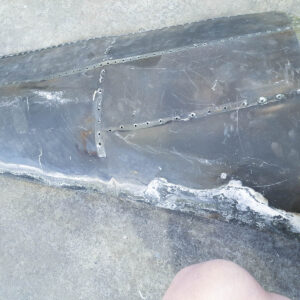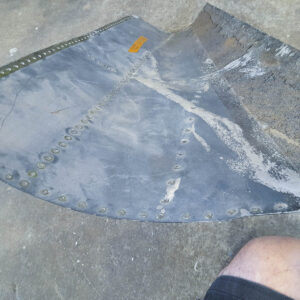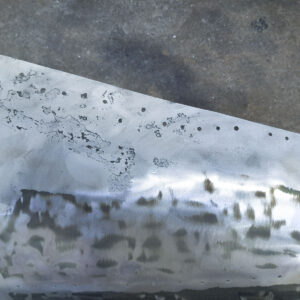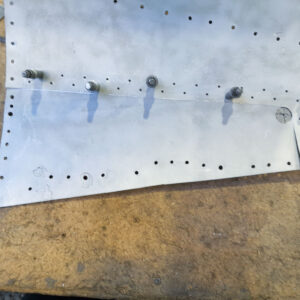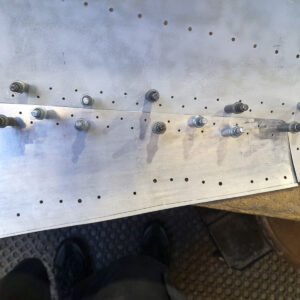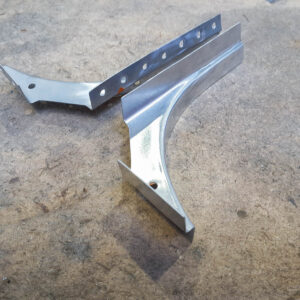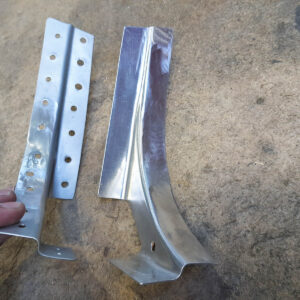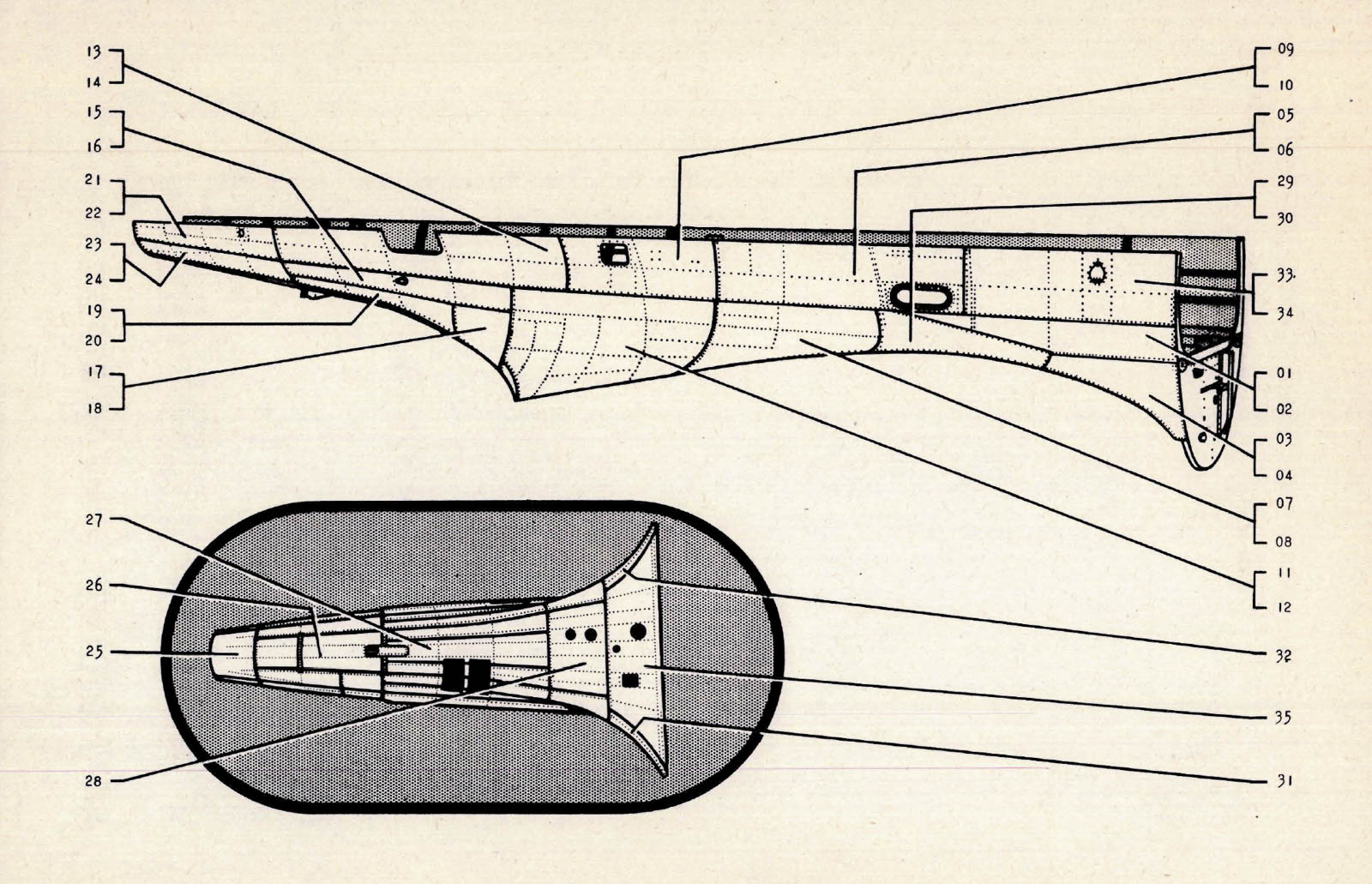
Wing Root Fairings:
When the team at Pioneer Aero separated the SBD's fuselage into its various major subassemblies last August, part of the process involved drilling off the wing root fairings. These are the skin panels which blend the fuselage aerodynamically into the wing center section on either side of the airframe. In recent weeks, Craig Cunha has spent time assessing the condition of these components and their underlying structure. He has also begun restoring the salvageable sections of skin and structure.
A significant amount of this structure from the right side of the airframe was indeed rebuildable. This proved especially helpful, as those parts provided excellent reference material for the remanufacture of their absent counterparts from the left side; the latter having presumably been removed during B22's time at the National Naval Aviation Museum in Pensacola, Florida. This article describes the restoration of some of these skin panels to show processes involved.
Fairing Assessment and Restoration:
Cunha inspected the original wing root skins to assess their condition and media-blasted those he deemed potentially salvageable to remove the grime, paint and surface corrosion. He then planished out any minor dents to return the skin panels to their correct contour. Some of the fairings, while in excellent overall condition, did require skin-grafts to replace areas too damaged for repair. These fixes all conformed to those which the manufacturer outlined in the SBD's Structural Repair Manual.
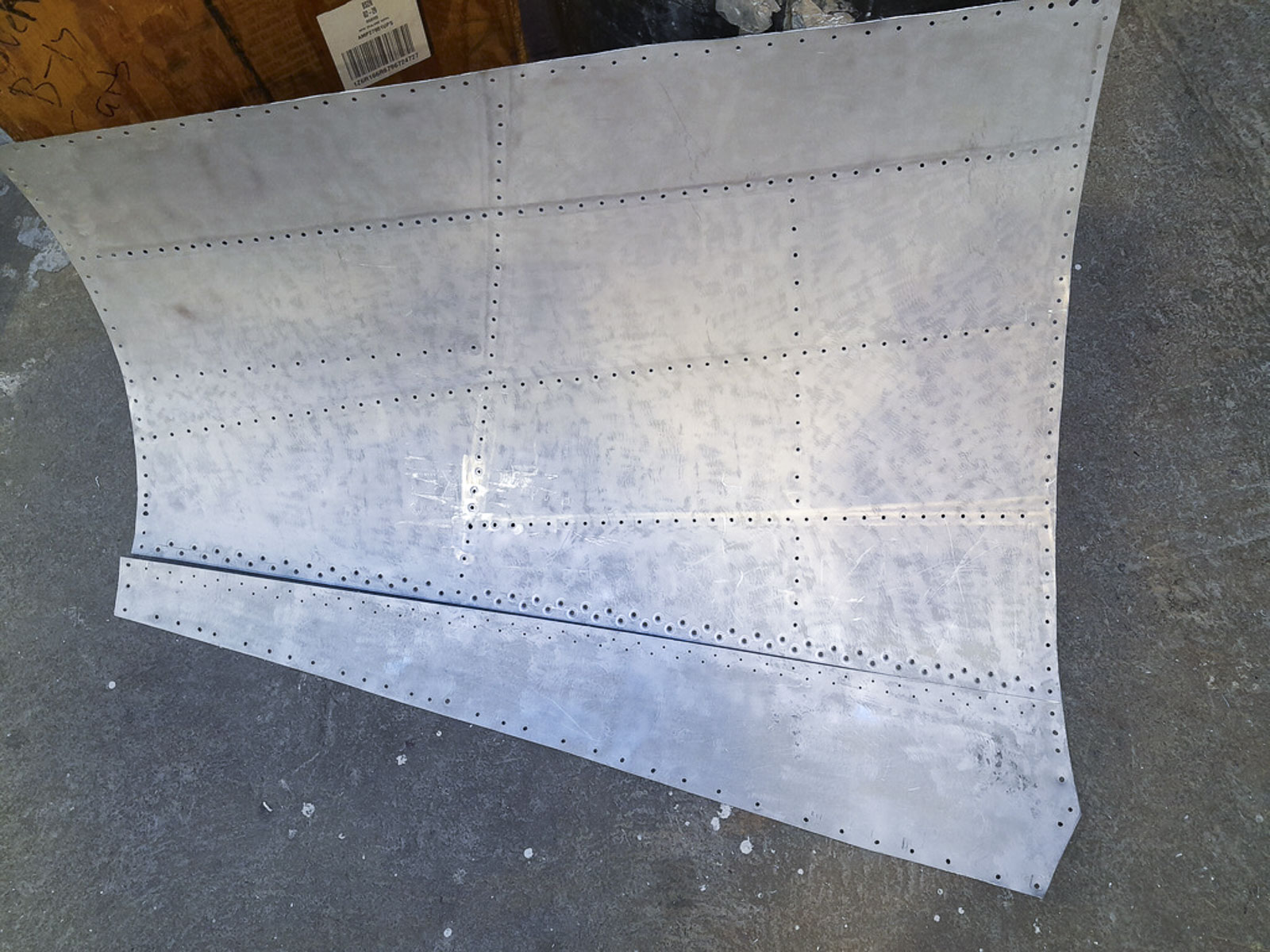
Fairing 5063493-21 Repairs:
The image above shows a wing root fairing (Douglas part #5063493-21) from the right side of the airframe with repairs already underway. This part, which appears as item #12 in this article's leading illustration, exhibited significant corrosion along the lower edge. Cunha carefully sliced away the lower portion of skin (as the image reveals) but not before pre-drilling a splice plate for securing a replacement section of skin precisely in its place (note the double row of rivet holes along each side of the divide). The two subsequent images show the completion of these repairs.
Fairing 5063493-15 Repairs:
The image immediately below shows Douglas part #5063493-15, another wing root fairing from the right side of the airframe. This component, which appears as item #08 in this article's leading illustration, mates up with the fairing shown in the previous section. Prior to cleaning, it did appear to be an excellent candidate for reuse, although the interior surface did exhibit the tell-tale, white-powdery signs of aluminum oxide. Following media-blasting, it was clear that corrosion had indeed taken hold in one location. Thankfully, with a little skill and perseverance, Craig Cunha was able to excise the affected area and splice in a replacement section of skin. The subsequent sequence of images reveals the process involved.
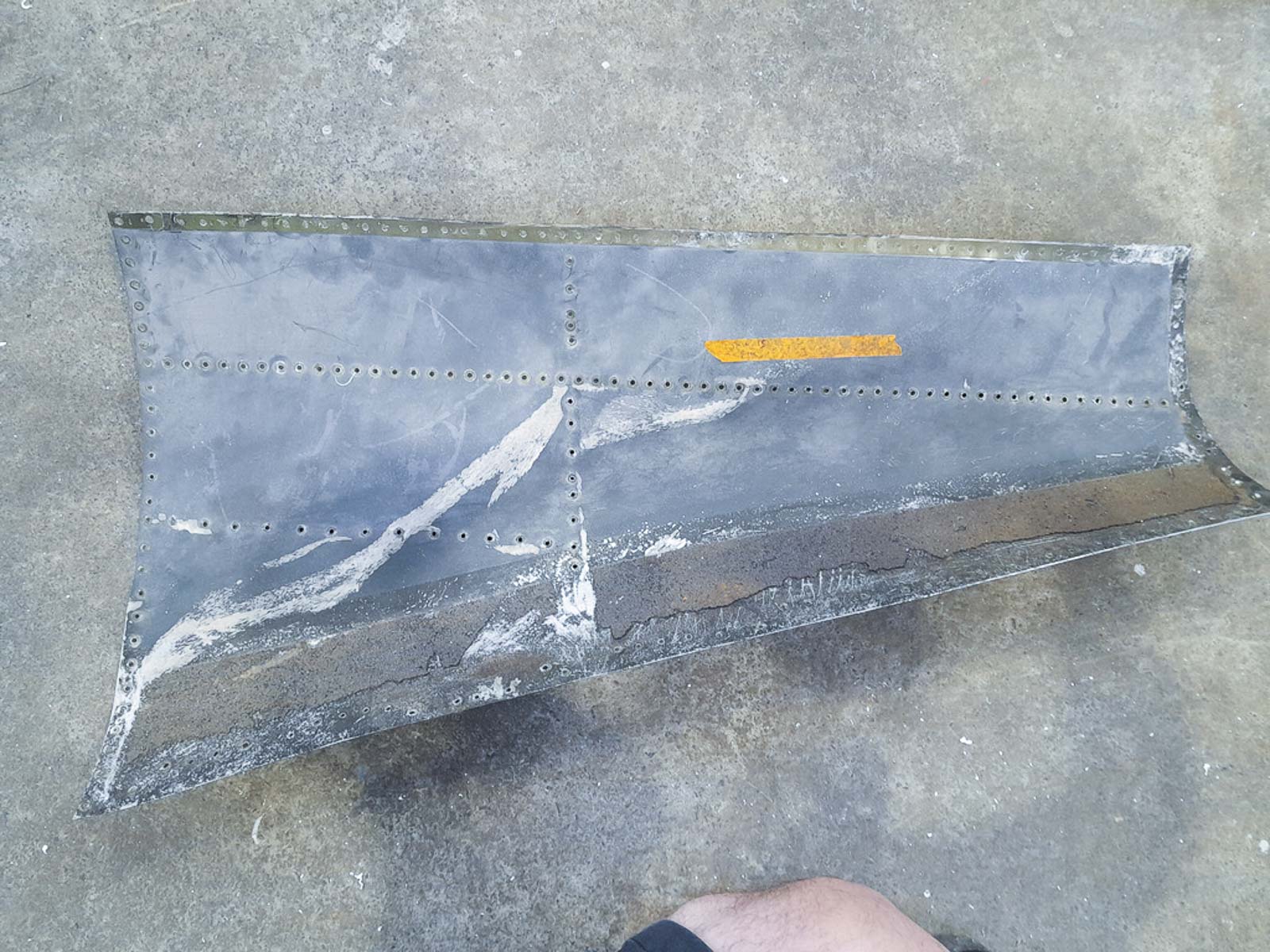
An inside view of wing root fairing 5063493-15 prior to media-blasting. The white residue at the lower right is usually a sign of aluminum corrosion. (image via Pioneer Aero Ltd.)
A view looking down the length of the fairing, with the far end pointing towards the front of the airframe. The image reveals how the curvature profile changes along the length of the part, a critical contour to preserve. (image via Pioneer Aero Ltd.)
After removing the dirt and paint, it is clear that there is a significant level of corrosion pitting in this section of the fairing. Thankfully it doesn't extend too far, so it is still possible to splice in replacement skin. (image via Pioneer Aero Ltd.)
Repairs to the fairing underway. This image shows the damaged section of skin (note the corrosion pitting on the top side too) part way through its removal process. It has already been cut away, but the new splice plate is clecoed in place to its rear. (image via Pioneer Aero Ltd.)
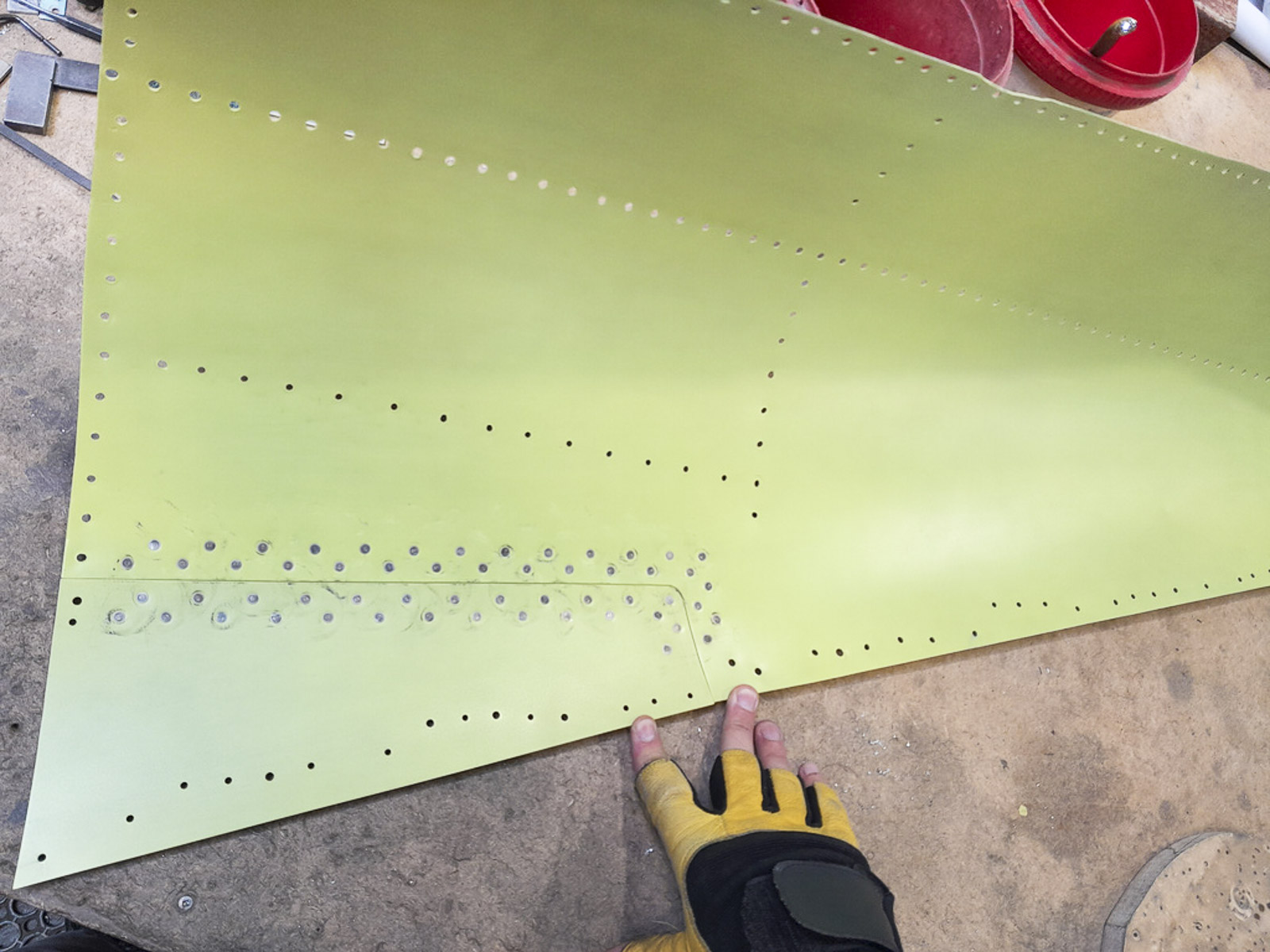
Frame 5 Fairing Support:
Craig Cunha also performed restorative work on some of the structure supporting the wing root fairings. He noted that the Frame #5 wing root fairing support was missing from the left side of the fuselage, and had not come with the project. He fabricated a replacement component which mirrored the existing righthand example, referencing the manufacturer's drawings to do so. The images below show the restored original from the right side, and its newly-fabricated replacement for the left.
The restored original Frame #5 wing root fairing support for the right side of the fuselage (note the existing rivet holes) and its newly-manufactured mirror image for the left side. (image via Pioneer Aero Ltd.)

